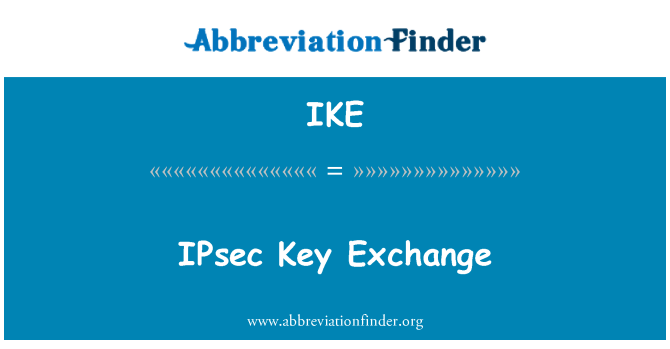5 IKE/IPSec Tips

The realm of Internet Key Exchange (IKE) and Internet Protocol Security (IPSec) can be complex, filled with protocols and configurations that, if not properly managed, can lead to security vulnerabilities or connectivity issues. Understanding the intricacies of IKE and IPSec is crucial for securing network communications, especially in environments where remote access or site-to-site VPNs are essential. Here are five tips to help navigate the world of IKE/IPSec effectively:
1. Choose the Right IKE Version
When configuring IKE/IPSec, one of the initial decisions is which version of IKE to use. IKEv1 and IKEv2 are the two primary versions, with IKEv2 being the more advanced and recommended version due to its improved security features and simplicity. IKEv2 offers better support for NAT traversal, is less prone to fragmentation issues, and provides more robust security against certain types of attacks. If possible, opting for IKEv2 can simplify the configuration process and enhance the overall security posture of your VPN connections.
2. Select Strong Encryption Algorithms
The choice of encryption algorithms for both IKE and IPSec phases is critical. With the constant evolution of computing power and cryptographic attacks, it’s essential to select algorithms that are currently considered secure. For IKE, using a strong Diffie-Hellman group (like DH22, DH23, or DH24) for key exchange and a secure cipher suite (such as AES-256 for encryption and HMAC-SHA-256 for integrity) is recommended. Similarly, for IPSec, selecting AES-256-GCM for ESP (Encapsulating Security Payload) provides both confidentiality and integrity. Regularly reviewing and updating these choices as cryptographic standards evolve is crucial.
3. Implement Perfect Forward Secrecy (PFS)
Perfect Forward Secrecy ensures that even if an attacker obtains the long-term keys used in the IKE authentication process, they will not be able to decrypt previously captured encrypted data. This is achieved by deriving each session’s keys independently from the long-term key. Implementing PFS typically involves using ephemeral Diffie-Hellman (DHE) during the IKE phase. Configuring your IKE/IPSec setup to use DHE (for example, DH groups 19, 20, or 21) adds an extra layer of security against potential future compromises of long-term secrets.
4. Configure Dead Peer Detection (DPD)
Dead Peer Detection is a mechanism used to detect whether a peer (the device at the other end of the VPN connection) is still active or has gone down. This feature is particularly useful for keeping VPN connections up and reducing the overhead of maintaining multiple tunnels. Properly configuring DPD involves setting the right interval for sending DPD requests and determining how many failures should occur before a peer is considered down. This can help in maintaining the stability and availability of VPN connections, especially in scenarios where network reliability is a concern.
5. Regularly Audit and Update Your Configuration
Given the dynamic nature of security and the continuous discovery of vulnerabilities, it’s essential to regularly review your IKE/IPSec configurations. This includes checking for any updates to your VPN devices or software, reviewing logs for any anomalies, and ensuring that your configurations are in line with the latest security standards. Regular audits can help identify potential issues before they become major problems, ensuring your network communications remain secure and uninterrupted.
In conclusion, managing IKE and IPSec effectively requires a deep understanding of the underlying protocols, careful selection of encryption algorithms, and proactive maintenance of your configurations. By following these tips, organizations can significantly enhance the security and reliability of their VPN connections, ensuring that remote access and site-to-site communications remain secure in an ever-evolving threat landscape.
What is the primary difference between IKEv1 and IKEv2?
+IKEv2 is an improvement over IKEv1, offering better security features, support for NAT traversal, and less susceptibility to fragmentation issues, making it the preferred choice for most VPN configurations.
Why is Perfect Forward Secrecy important in IKE/IPSec?
+Perfect Forward Secrecy ensures that even if an attacker obtains long-term keys, they cannot decrypt previously captured data, enhancing the security of IKE/IPSec connections by using ephemeral keys for each session.
How does Dead Peer Detection contribute to VPN reliability?
+Dead Peer Detection helps maintain VPN availability by regularly checking if the peer at the other end of the connection is still active, allowing for quicker detection and recovery from connection failures.


